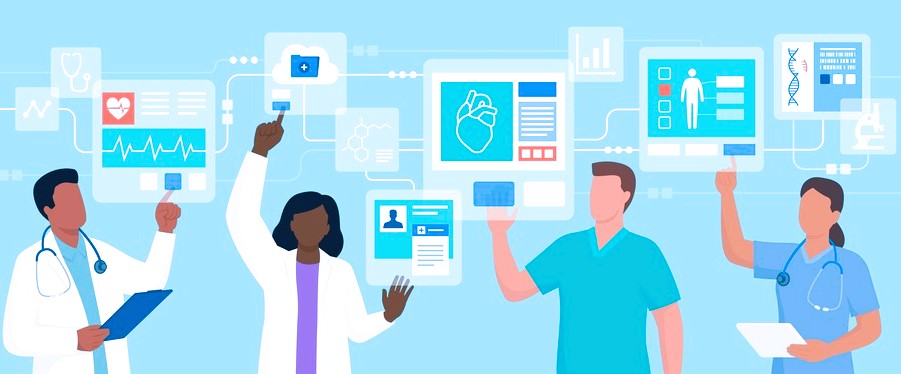Efficiency in patient care is paramount for healthcare providers to deliver high-quality services while optimizing resources and minimizing wait times. This article will explore five effective strategies to improve patient care efficiency. These strategies encompass various aspects of healthcare delivery, including streamlining processes, leveraging technology, enhancing communication, and prioritizing patient-centered care. By implementing these approaches, healthcare facilities can enhance operational productivity, work on quiet results, and upgrade in general fulfillment.
1. Streamline Appointment Scheduling and Check-In Processes
One way to improve patient care efficiency is by streamlining appointment scheduling and check-in processes. Implementing online appointment scheduling systems allows patients to book appointments conveniently and reduces the need for manual scheduling by staff. Additionally, offering mobile check-in options enables patients to complete registration forms and insurance verification electronically, reducing wait times and administrative burdens. By automating these processes, healthcare facilities can optimize staff resources, minimize patient wait times, and enhance overall patient satisfaction with the care experience.
2. Utilize Electronic Health Records (EHR) Systems
Implementing electronic health records (EHR) systems is another effective way to improve patient care efficiency. EHR systems centralize patient data, including medical history, lab results, and treatment plans, making information readily accessible to healthcare providers. This facilitates collaboration among care teams, reduces redundant tests and procedures, and enhances communication between healthcare professionals. Moreover, EHR systems enable quick and accurate documentation of patient encounters, leading to improved clinical decision-making and better continuity of care. By leveraging EHR technology, healthcare providers can streamline workflows, reduce administrative burdens, and enhance the overall efficiency of patient care delivery.
3. Implement Telemedicine Services
Telemedicine services offer a convenient and efficient way to deliver healthcare services remotely, particularly for routine consultations and follow-up appointments. By implementing telemedicine platforms, healthcare providers can conduct virtual visits, monitor patient progress, and provide timely interventions without the need for in-person visits. This not just diminishes the requirement for patients to travel to healthcare facilities but also enhances access to care, particularly for individuals in rural or underserved areas. Additionally, telemedicine can improve appointment scheduling flexibility, reduce wait times, and increase patient satisfaction with the convenience of remote consultations.
4. Enhance Care Coordination and Communication
Effective care coordination and communication among healthcare providers are essential for delivering seamless and efficient patient care. Implementing care coordination protocols and utilizing communication tools such as secure messaging platforms or care coordination software can improve collaboration among care teams. This ensures that all providers involved in a patients care have access to relevant information and can coordinate efforts effectively. Moreover, regular multidisciplinary team meetings or huddles enable care teams to discuss patient cases, address challenges, and develop comprehensive care plans collaboratively. By enhancing care coordination and communication, healthcare providers can minimize errors, reduce delays in treatment, and optimize the overall efficiency of patient care delivery.
5. Incorporate AI Notes
In the quest to enhance patient care efficiency, healthcare providers are increasingly integrating HIPAA-Compliant AI progress notes into their clinical workflows. AI Notes leverages advanced algorithms and natural language processing to automate and streamline the documentation process, significantly reducing the time spent on administrative tasks. By analyzing patient data and extracting pertinent information from clinical encounters, AI Notes generate comprehensive and accurate documentation in a small part of the time expected by conventional techniques. This mechanization further develops effectiveness as well as also ensures consistency and standardization across healthcare documentation. Moreover, AI Notes
facilitate real-time updates and revisions, allowing clinicians to access the most up-to-date patient information promptly. Overall, the incorporation of AI Notes represents a promising avenue for healthcare organizations to optimize patient care workflows and deliver more efficient and effective care.
Conclusion
Efficiency in patient care is essential for healthcare facilities to meet the growing demands for services while maintaining high standards of quality and safety. By implementing strategies such as streamlining appointment scheduling, utilizing electronic health records, implementing telemedicine services, enhancing care coordination and communication, and incorporating AI notes, healthcare providers can optimize workflows, reduce wait times, and enhance overall patient satisfaction. It’s crucial for healthcare organizations to continuously assess and refine their processes to ensure that they meet the evolving needs of patients and deliver care efficiently and effectively. Through a commitment to continuous improvement and innovation, healthcare facilities can achieve their goals of providing high-quality, patient-centered care cost-effectively.



